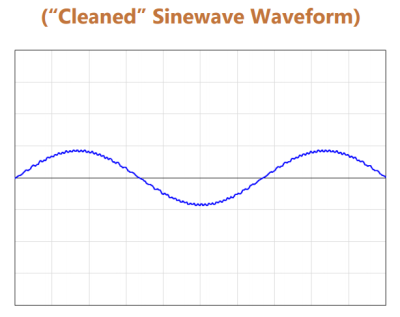The Basics Of Sine Wave Filters
Introduction:
In order to understand the basics of sine wave filters, we first need to look at how motor drive systems work. Motors that operate on alternating current need special power supplies that deliver power to start and stop the motor smoothly. If the motor were to transition from full “off” to full “on” in a short period of time, it would put undue stress on the mechanical parts of the equipment. Instead, the power supply needs to start and stop the fan motor gradually. Likewise, once a motor is running, many applications require adjusting its speed and torque to accommodate different mechanical loads. Variable frequency drives (VFDs) provide a power supply that can offer gradual start/stop and variable speed/torque. By adjusting the frequency of current sent to a motor, a VFD controls its speed.
Variable Frequency Drive (VFD):
AC motors operate at their peak efficiency when they run on clean sinusoidal power. VFD's, however, produce modulated square waves. The pulse width of these square waves are variable. This is known as PWM—pulse width modulation. VFDs can also control the amplitude of each square wave.

Powering a motor with square waves might, at first, sound like a poor idea. However, VFD's maintain such fine control over the width and amplitude of the square waves that they take on the appearance (as viewed on an oscilloscope) of fairly good approximations of a sine wave. Yet even the most sophisticated VFD's fail to match the purity of a true sine wave. Additionally, VFD's introduce significant harmonic distortion that can damage the motor. That's where sine wave filters come into the picture.
The Benefits of Sine Wave Filters:
Installing a sine wave filter between the VFD power source and the motor itself “smooths” the VFD pulse width modulated square wave signal and converts it into a nearly perfect sinusoidal power waveform. The VFD and sine wave filter combination allows the motor to run at continuously adjustable speeds and adaptable torque for varying mechanical loads. Running the motor without a sine wave filter causes several problems.

- First, when the VFD converts the power company's clean 60 Hz sinusoidal waveform into square wave pulses, the leading edge of each square wave will usually contain some proportion of “voltage overshoot”— voltage spikes that can damage the motor.
- The modulation process also introduces harmonic distortion into the final VFD output that corrupts the shape of the PWM output. All harmonic distortion that is not filtered will be burnt up as heat in the motor’s windings, causing excessive stress and efficiency losses.
- Finally, common mode noise with respect to ground can allow stray currents to flow through the bearings of the motor itself. This causes an effect known as “fluting” or “bearing currents.” As low common mode current discharges through the bearing, it melts small pits into the bearing. Over time, the bearing fails and can cause the motor moving at high speed to virtually self-destruct.
CTM sinewave filters solve all three of these problems, and handle current loads up to 1,500 amps (RMS) allowing safe operation of motors up to approximately 1,200 HP. In all, CTM has filters designed for max current loads between 130 and 1,500 amps, providing a wide choice of products and price points.
High Frequency Sine Wave Filters:
CTM is the premier supplier of high frequency, high performance magnetics, exemplified by our High Frequency Sinewave Filters. These filters were designed specifically for high speed motors (such as permanent magnet motors). Conventional laminated silicon-steel filters produce excessive heat at high frequencies due to high magnetic core losses, making them ill-suited for this application. CTM’s high frequency filters do not suffer from the same limitations due to the application of high performance magnetics materials.
For more information on sine wave filter basics, contact CTM today.
 " alt="">
" alt="">